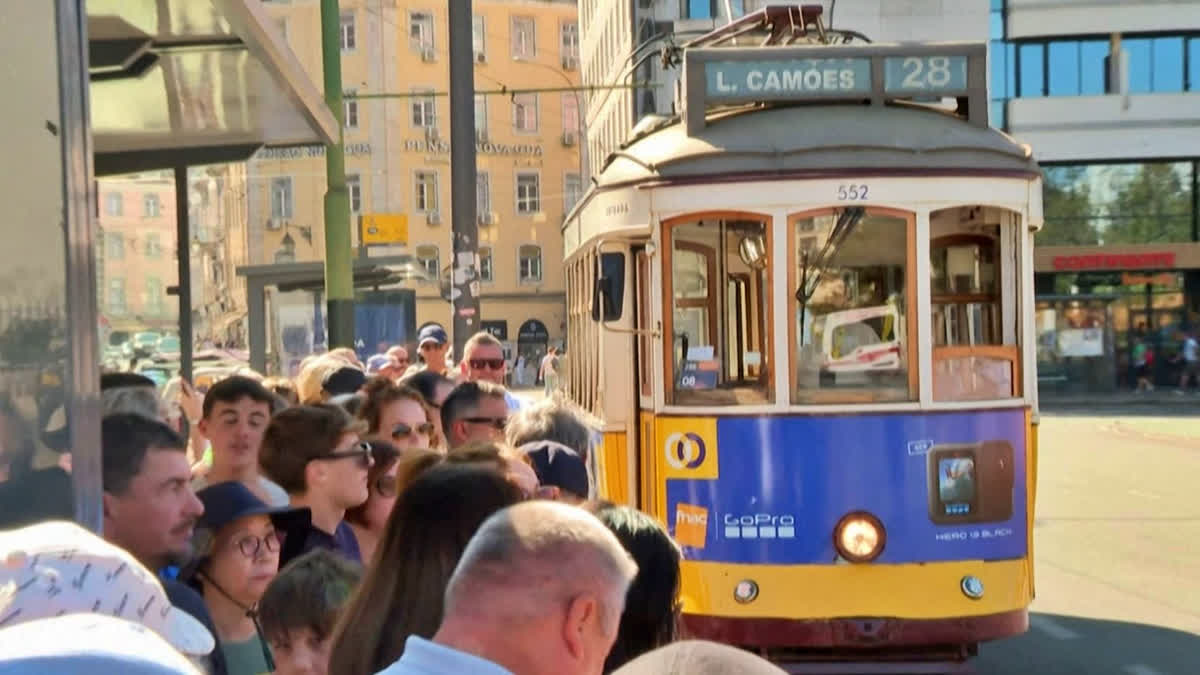Lisbon:Just like San Francisco has its red tramway, London has its black taxis, Lisbon's yellow 'Electrico' trams are an icon symbolic of the city. The rickety, old-fashioned trams that crisscross the Portuguese capital from hill to hill have become a major, must-see attraction for tourists.
Officially launched in 1901, the old Electrico celebrates its 123rd birthday this year and is still as noisy as ever but still going strong. "It's great, but it's not a very comfortable mode of transport. You're really shaken up, like the oranges here!" says French tourist Olivier Kafer.
Meanwhile, Locals fume as Lisbon's historic trams become tourist 'toy'.
An age-old symbol of the Portuguese capital, Lisbon's rickety yellow trams have become such a magnet for tourists that some locals complain they can no longer grab a ride.
Lisbon began operating trams in the late 19th century to transport passengers up the steep and narrow streets crisscrossing the hilly old city.
Today's visitors travel back in time admiring the wooden flooring and old-fashioned appearance of carriages that offer spectacular views of the Tagus River and picturesque pastel-coloured buildings.
But as visitors flock to the capital in larger numbers -- almost nine million in 2023 -- some residents are growing exasperated with the effects of mass tourism.
"The tram? It's not for us anymore, it's reserved for tourists!" said Luisa Costa, a resident of the working-class neighbourhood of Mouraria who is in her 60s.
With foreign visitors cramming the carriages, Costa now waits at a stop for electric minibuses put on by the Lisbon transport company Carris for residents who take the same route.
